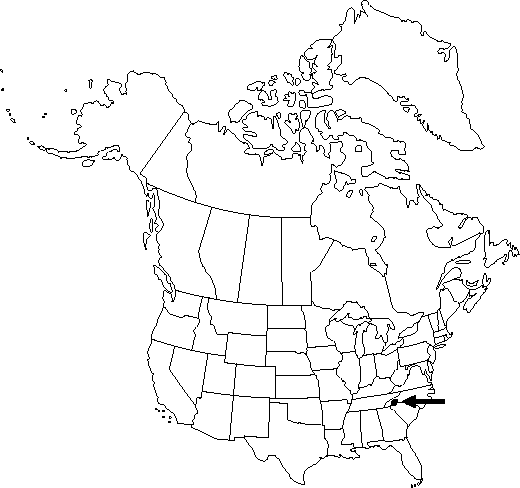Difference between revisions of "Hexastylis rhombiformis"
Brittonia 38: 82. 1986.
imported>Volume Importer |
imported>Volume Importer |
||
| Line 54: | Line 54: | ||
|publication year=1986 | |publication year=1986 | ||
|special status=Conservation concern;Endemic | |special status=Conservation concern;Endemic | ||
| − | |source xml=https:// | + | |source xml=https://bitbucket.org/aafc-mbb/fna-data-curation/src/2e0870ddd59836b60bcf96646a41e87ea5a5943a/coarse_grained_fna_xml/V3/V3_495.xml |
|genus=Hexastylis | |genus=Hexastylis | ||
|species=Hexastylis rhombiformis | |species=Hexastylis rhombiformis | ||
Latest revision as of 21:49, 5 November 2020
Rhizomes: internodes short, leaves crowded at rhizome apex. Leaf blade not variegate, cordate to subreniform. Flowers: calyx tube rhombic-ovoid, conspicuously tapered above middle, 16-24 × 12-19 mm, inner surface with high reticulations, ridges 1.5-2 mm high, lobes erect or weakly spreading, 3-6 × 3-6 mm, adaxially puberulent; stamen connective extending slightly beyond pollen sacs; ovary superior; ovules 8 per locule; style notched at apex.
Phenology: Flowering spring (Apr–Jun).
Habitat: Sandy river bluffs or ravines, deciduous forests, with Kalmia latifolia and Rhododendron maximum
Elevation: 500-1000 m
Discussion
Of conservation concern.
Hexastylis rhombiformis is endemic to a small area south of Asheville, North Carolina, extending south to the headwaters of the Saluda River, South Carolina. L. L. Gaddy (1986) illustrated the variation in flower shape in the species. Collections of this species made in the late 1800s were often identified as Asarum memmingeri.
Selected References
None.
